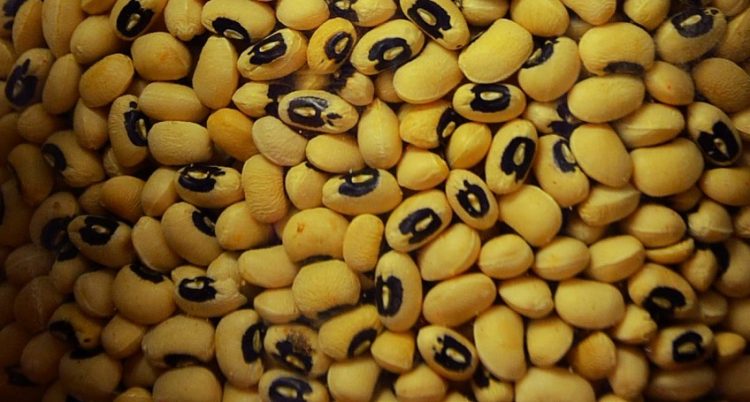Internacional
Incêndio que devastou área florestal no Chipre está sob controlo
O grande incêndio que devastou áreas inteiras da floresta de Troodos, no Chipre, que provocou a morte de quatro pessoas, está "completamente sob controlo", anunciaram hoje as
Ler maisApoio a mulheres rurais da Guiné-Bissau permite gerar rendimentos e reforça educação
Maria, Odete e Djenabu são três das beneficiárias de um projeto para apoiar mulheres rurais guineenses, da organização não-governamental Tiniguena, e garantem que a sua vida melhorou
Ler maisProjeto executado pela ONG Tiniguena melhora alimentação e vida de milhares de guineenses
Um projeto da Tiniguena de apoio a mulheres rurais na Guiné-Bissau está a melhorar a vida de milhares de pessoas, bem como a sua segurança alimentar, segundo a organização
Ler maisFilipino farmers reap economic benefits from GMO corn, study finds
Filipino farmers, including low-income households, have benefitted economically from growing genetically modified (GM) corn, according to a new study.
Ler maisEndiama associa-se a privados e investe em projeto agroindustrial no leste de Angola
A Endiama, diamantífera estatal angolana, e a RGS Holding, empresa privada, vão investir mais de quatro mil milhões de dólares (3,3 mil milhões de euros), em projetos agroindustriais
Ler maisNigeria makes history with GMO cowpea rollout
History was made today as Nigeria officially released genetically modified (GM) cowpea, which offers protection from the pod borer pest.
Ler maisNoruegueses com 236.000 m2 por 50 anos para produzir atum de aquacultura em Cabo Verde
O Governo cabo-verdiano autorizou a concessão por 50 anos de 236.000 metros quadrados (m2) a um grupo norueguês, para permitir a atividade de uma unidade de produção de atum
Ler maisUse of antibiotics in animals is decreasing
Use of antibiotics has decreased and is now lower in food-producing animals than in humans, says the latest report published by the European Food Safety Authority (EFSA)
Ler maisIniciativa de cidadania europeia: a Comissão apresentará uma proposta com vista à eliminação progressiva da utilização de gaiolas na criação de animais
A Comissão decidiu hoje aprovar a iniciativa de cidadania europeia «Fim da era da gaiola», a sexta iniciativa bem-sucedida apoiada por mais de um milhão de cidadãos em toda a
Ler maisQuestions and Answers: Commission’s response to the European Citizens’ Initiative on “End the Cage Age”
The European Citizens' Initiative (ECI) ‘End the Cage Age' called on the Commission to propose legislation to prohibit the use of cages for:
Ler maisVisão a longo prazo para as zonas rurais da UE: mais fortes, ligadas, resilientes e prósperas
The European Commission has today put forward a long-term vision for the EU's rural areas, identifying the challenges and concerns that they are facing, as well as highlighting some of
Ler maisQuestions and Answers on the Long-Term Vision for Rural Areas
The EU has experienced a series of trends which are reshaping its socio-economic and demographic landscape. Despite overall convergence at Member State level, regional and territorial
Ler maisBolsonaro proíbe queimadas para práticas agropastoris no Brasil por 120 dias
O Presidente brasileiro, Jair Bolsonaro, decretou hoje a proibição de queimadas para práticas agropastoris e florestais de todo o país por 120 dias, além de ter autorizado a atuação de militares na
Ler maisJapão apoia Cabo Verde com quase 1,9 M€ para compra de cereais
O Governo japonês vai apoiar Cabo Verde com quase 1,9 milhão de euros para a aquisição de cereais, permitindo estabilizar os preços no mercado nacional, anunciou hoje o executivo
Ler maisReforma de la PAC 2021-2027 (ASAJA): en lo aprobado sobra ideología y falta agronomía
Imagen de José Antonio Caro desde la provincia de Ciudad Real. La reforma de la PAC, que lleva más de tres años negociándose en las instancias comunitarias, ha dado un paso importante para su adopción en los acuerdos alcanzados en...
Ler maisGoverno angolano vai subvencionar em 35% fertilizantes para agricultura
O Governo angolano vai subvencionar até 35% o preço dos fertilizantes para produtores agrícolas, principalmente os que desenvolvem a agricultura familiar, disse hoje o ministro da
Ler maisMinistros da Agricultura reafirmam a necessidade de uma nova abordagem para proteger as abelhas melíferas
Os ministros da Agricultura chegaram hoje a acordo sobre a necessidade de definir um objetivo específico para proteger as abelhas melíferas dos pesticidas.
Ler maisMinistros da Agricultura confirmam acordo sobre a reforma da PAC
Os ministros da Agricultura da UE aceitaram o acordo provisório alcançado com o Parlamento Europeu na passada sexta-feira sobre os principais elementos da reforma da política
Ler maisLong-term vision for rural areas: Commission publishes public opinion survey on rural areas
A majority of EU citizens support the EU including rural areas in public spending decisions. The key need of rural areas most mentioned is transport infrastructure and connections, according
Ler maisAprobación de la nueva PAC: Periodo de adaptación de dos años a los ecoesquemas y la condicionalidad social, voluntaria hasta 2025
Poco a poco, como ejemplo de la poca transparencia que ha tenido todo el proceso de aprobación de la nueva PAC, se sigue desgranando conceptos de la reforma aprobada en el seno
Ler maisPormenores del acuerdo de la PAC: 25% de los pagos a los ecoesquemas, no hay precios justos y se acepta la pluriactividad
Poco a poco se van desgranando los pormenores del acuerdo de la PAC alcanzando por las instituciones de la Unión Europea (Comisión, Parlamento y Consejo) alcanzaron este viernes
Ler maisCopa and Cogeca’s preliminary reaction to the agreement found on the CAP
After three years of complicated negotiations and an uncountable number of trilogues, we welcome the fact that negotiators have finally reached
Ler maisCooperação ambiental entre Portugal e Cabo Verde aumenta para 2,3 milhões de euros
A cooperação ambiental entre Portugal e Cabo Verde vai aumentar de 1,9 para 2,3 milhões de euros em investimentos em oito projetos no arquipélago, conforme protocolo assinado hoje, na
Ler maisPolitical agreement on new Common Agricultural Policy: fairer, greener, more flexible
The provisional political agreement reached today by the European Parliament and Council on the new Common Agricultural Policy introduces a fairer, greener, more animal friendly
Ler maisEU farm policy reform as approved by MEPs
On Friday, 25 June 2021, Parliament, Council and Commission negotiators reached an informal political deal on the EU Farm policy from 2023 onwards.
Ler maisEU agri-food trade sharply increase in March 2021
With a slow start at the beginning of the year, EU agri-food trade in January-March 2021 (exports plus imports) reached a value of €75.8 billion, 4%
Ler maisItália e Banco Africano dão 990 mil euros para a agricultura em Moçambique
O Banco Africano de Desenvolvimento (BAD) anunciou hoje uma doação de 990 mil euros, financiada pela Itália, ao setor agrícola de Moçambique, para aumentar a cadeia de valor da
Ler maisMeasuring what ecosystems do for us
Ecosystems contribute essential services to the economy and society. These include the provision of food, filtration of air and water, pollination, climate
Ler maisEuropean farmers mobilised around the latest CAP trilogue – Negotiators must reach a good compromise this week!
Despite COVID-19 limitations, the EU farming community was mobilised today at the call of Copa and Cogeca in front of the European Parliament
Ler maisAjuda da UE aos produtores de leite após o embargo russo à importação não foi suficientemente bem orientada
A União Europeia tomou medidas abrangentes para apoiar os agricultores durante as perturbações no mercado do leite no período de 2014-2016.
Ler maisCopa-Cogeca, Europatat, Euroseeds and Starch Europe’s statement on New Genomic Techniques in potato breeding
Potatoes are the fourth most important food crop in the world after corn, rice and wheat and play an important role in Europe
Ler maisBolsonaro exonera Ministro do Meio Ambiente do Brasil Ricardo Salles
O ministro do Meio Ambiente do Brasil, Ricardo Salles, cuja gestão foi marcada por várias polémicas, foi hoje exonerado pelo Presidente, Jair Bolsonaro, que nomeou para o cargo
Ler maisPior seca dos últimos 40 anos atinge Madagáscar que tem milhões a passar fome
O sul de Madagáscar vive a sua pior seca dos últimos 40 anos, causada pelas alterações climáticas, que levou 1,14 milhões de pessoas a sofrer de insegurança alimentar, numa crise “invisíve
Ler maisApreendidas 1.200 toneladas de pesticidas ilegais em operação internacional
Mais de 1.200 toneladas de pesticidas ilegais foram retiradas do mercado durante a operação ‘Silver Axe VI’, liderada pela Europol, no âmbito da qual a Autoridade Tributária recusou a importação
Ler maisBrasil anuncia 42,4 mil milhões de euros em crédito para apoiar produtores rurais
O Governo brasileiro lançou na terça-feira o Plano Safra 2021/2022, com 251,22 mil milhões de reais (42,4 mil milhões de euros) em créditos para apoiar a produção agropecuária nacional
Ler maisGabão recebe fundos internacionais em retribuição de políticas contra a desflorestação
O Gabão é o primeiro país africano a receber fundos internacionais para continuar os seus esforços contra a desflorestação no seu território, coberto por floresta em cerca de
Ler maisPor que razão os fundos europeus para as regiões são importantes?
Além de ajudar as regiões a recuperar da crise da COVID-19 e a reduzir as disparidades [...
Ler maisBrasil melhorará sistema de rastreio para travar desflorestação na Amazónia
A ministra da Agricultura brasileira disse hoje que o país vai adotar uma nova legislação para melhorar o rastreio da sua produção agropecuária, visando garantir a segurança alimentar e
Ler maisDespesas agrícolas da UE não tornaram a agricultura mais respeitadora do clima
De acordo com um relatório especial do Tribunal de Contas Europeu (TCE), o financiamento agrícola da UE destinado à ação climática não contribuiu
Ler maisFAO preocupada com próxima época de cultivo em Timor-Leste após as cheias
Danos em sistemas de irrigação em Timor-Leste provocados pelas cheias e pragas estão a causar preocupações relativamente à próxima época de cultivo, com milhares de hectares
Ler mais









































































